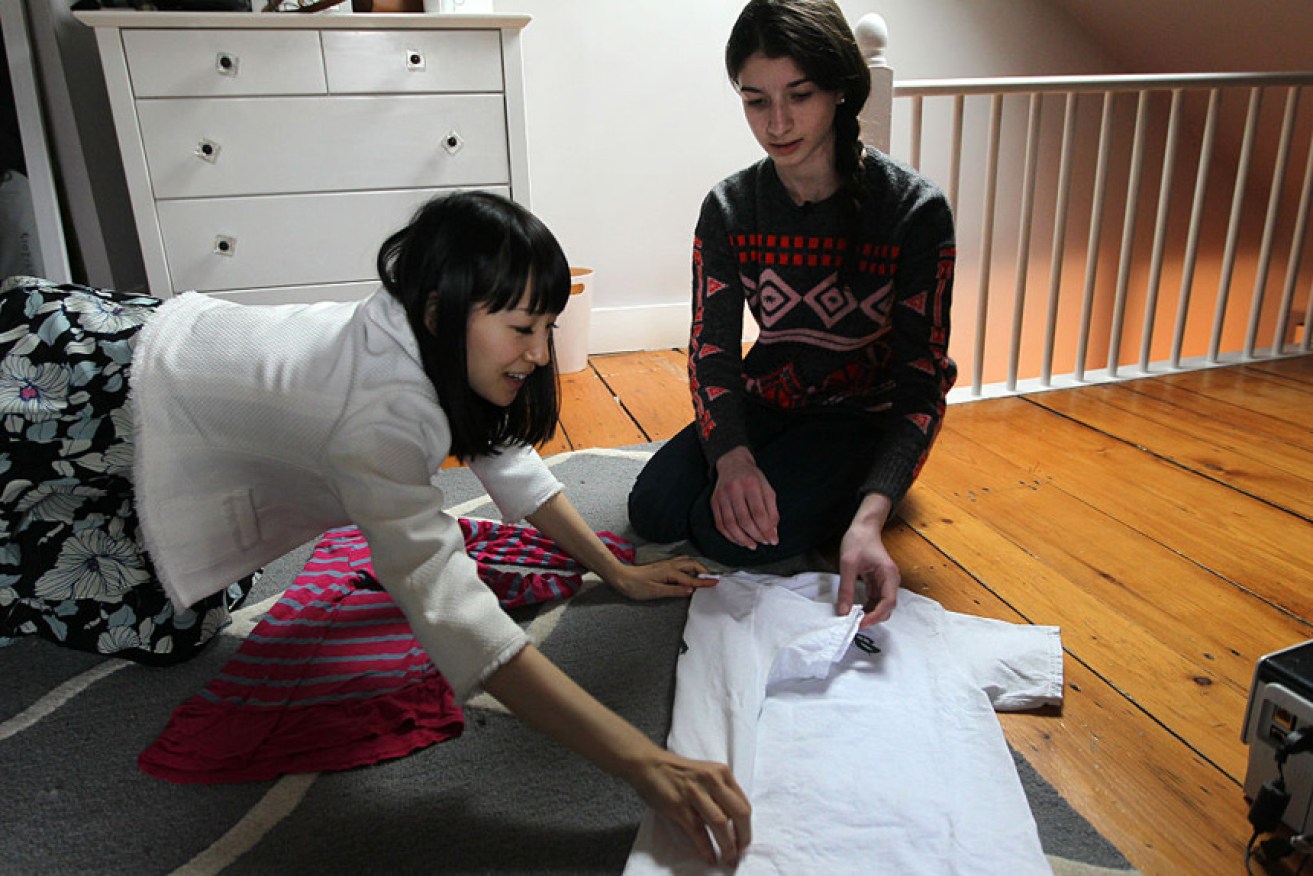How Marie Kondo sparked the decluttering revolution

Marie Kondo's obsessive methods are catching on. Photo: Getty
If you haven’t yet heard of Marie Kondo, you are probably buried under a mountain of needless possessions in a stressfully cluttered house.
The Japanese guru of decluttering has gone viral this month following the debut of her new Netflix series, Tidying Up.
Cue a flood of social media posts from energetic viewers inspired to empty their overstuffed homes – one painstaking item at a time – and create order in messy drawers with frighteningly precise clothes folding.
Kondo has been around for a few years, appearing on Ellen and earning a place among Time magazine’s most influential people.
But the release of the eight-episode Netflix series has inspired a new level of binge-cleaning after a bout of binge-watching.
What makes Kondo’s popular method distinct from general spring cleaning, and different from the minimalist trend is her emphasis on keeping items that “spark joy”.
Kondo-cult devotees are urged to mindfully clasp each possession and contemplate whether that dress, book or handbag brings an amount of joy.
If not, then out the door it goes to charities (turning op shops into gold mines), to friends/family or the tip, not before some gratitude has been expressed towards the item.
The KonMari Method is outlined in the pint-sized guru’s bestselling book, The Life-Changing Magic of Tidying Up, which was first published in 2011 and is flying off the shelves thanks to her revived popularity.
Rather than progressing from room to room, Kondo asks followers to whittle down their accumulated junk by category such as clothes, books and paper.
Australia’s first trained KonMari consultant Sally Flower said the Japanese businesswoman’s simple approach has sparked huge interest in Australia.
In the past month alone, Ms Flower’s KonMari Australia Facebook page has gained more than 500 new followers while she has 11,000 Instagram followers.
“It’s a massive whirlwind for me at the moment, but it’s important for people to know it’s a commitment, not a quick fix,” she told The New Daily.
“It’s about finding joy in what you have and not just getting rid of things.”
The Melbourne-based Ms Flower has helped declutter more than 30 homes, either in person or remotely, after undergoing training in New York two years ago.
She was an unusually tidy child who surprised her mum by religiously folding her underwear and her favourite part of playtime was tidily putting away the toys.
Ms Flower says organisational consultants such as herself will be the personal trainers of the future, helping improve people’s wellbeing by clearing out stress-inducing junk.
She is also passionate about educating people against what she warns is the lure of consumerism and unnecessary buying while being mindful of our impact on the environment.
“People can find it overwhelming [taking part in KonMari] because they have so much stuff to get through, but after a few days it gets easier, and they start to feel lighter,” she said.
Queensland mum of two Kate Davies came across a KonMari video while searching for online information to help tackle years of accumulation.
“I was pregnant and in the nesting stage and my house was a mess. I just had so much stuff,” Ms Davies said.
“I had boxes that were never opened and people kept giving me more stuff and I had other people’s stuff as well. It was a lot of stuff – just stuff taking up your life.”
Ms Davies has undergone a few KonMari cleanouts (although she doesn’t religiously adhere to the process) and is about to embark on another wave.
“Once you start you realise there are a lot of things you have that don’t bring you joy,” she said.
“Having less stuff equals less stress. Most of my stress comes from stuff.”
Holly Pender, an early childhood educator and blogger behind Little But Once, said KonMari had enabled her family of six (including twins) to inhabit a tiny 50-square-metre cottage.

Holly Pender has become more thoughtful about her purchases. Photo: Holly Pender
“If it wasn’t for following this method, we would be under a pile of stuff,” said the KonMari Mums Australia Facebook page founder.
Ms Pender’s approach has been to ensure every item has a place in the home and is easily accessed rather than tucked away in never-opened boxes.
“My house is not perfect by any means, but it has made a small space so much more enjoyable and functional,” she said.
Ms Pender is also more thoughtful about purchases, ensuring anything she buys will have its place in the house, is loved or practical.
“We live in a consumerist society, and young parents in particular are preyed on and told that you need to buy all these things for your baby and you end up with copious amounts of stuff.”

A tidy toy shelf in Holly Pender’s home. Photo: Holly Pender
Bathurst photographer Jo Guihot, a mum of three, said she got rid of half her children’s toys and culled bags of clothes when progressing through the KonMari Method.
Kondo recommends gathering all your categorised items into one room before searching out the keepers.
“You end up with a mountain of stuff and it’s quite frightening and overwhelming to see it in one place and commit,” Ms Guihot said.
She has instead found “joy” in photos, scrapbooking and spending time with family.
“It has made life easier but you can easily slip out of it,” she said.
“I definitely need another cleanout phase.”








